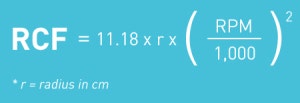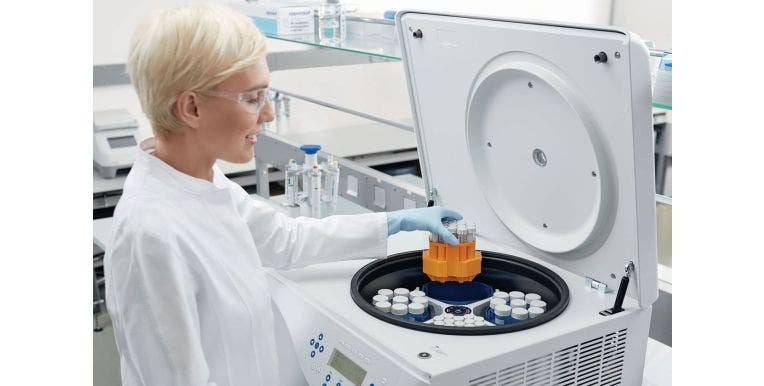Differences Between RCF & RPM in Centrifugation
When dealing with centrifuges, you will come across two different units of measure: The Relative Centrifugal Force (RCF) and Revolutions Per Minute (RPM). It is important that you are aware that the two are very different, get them wrong (which isn’t as uncommon as you might think) and the experiment will be ruined. Let’s take a look at both RCF and RPM in more detail and determine if there is any correlation between the two.
Revolutions Per Minute (RPM)
Revolutions Per Minute (RPM) in regards to centrifugation is simply a measurement of how fast the centrifuge rotor does a full rotation in one minute. Basically, it is telling us how fast the rotor is spinning. Centrifuges will have a speed range that they are capable of achieving and will vary depending on the centrifuge. A low-speed centrifuge might spin at as low as 300 RPM, while a high-speed centrifuge could spin up to 15000 RPM. Ultracentrifuges are also available and are the most powerful type of centrifuge, they can spin in excess of 150,000 RPM.
Relative Centrifugal Force (RCF)
Relative Centrifugal Force (RCF) or g-force (both are the same, RCF is expressed as units of gravity) is a measurement of the gravitational force that a sample is subject to. The force is generated from the spinning of the rotor which, in turn, exerts this force outward on the centrifuge tube. Not only does RCF take into account the speed of rotation, but it also measures the distance from the centre of rotation to give us a g-force measurement. RCF is the preferred method of measurement as it will remain the same even if you are using a different centrifuge with a different rotor size.
What’s the difference between RPM and RCF?
Both RPM and RCF/g-force can be measured in centrifugation but as we have just explored, the two are very different. RPM simply measures how fast the rotor is spinning and while this information is helpful, it is lacking the ability to truly measure the g’s the sample is subject to. A centrifuge spinning at 5000 RPM, for example, will spin at 5000 RPM regardless of the centrifuge being used or the size of the rotor. RCF accommodates the rotor size into its measurement so we can determine the gravitational force being applied. This is why you should always document your procedures as g’s rather than RPM.
You may notice that your centrifuge only has a setting for RPM. If this is the case, you can use a formula to convert RPM to RCF which is outlined below. If you are currently in the market for a centrifuge, try to find one that measures both RPM and RCF to save you having to manually convert them. Most modern centrifuges will have this functionality where you can simply switch between the two interchangeably. The formula below allows you to convert RPM to RCF but the issue with using this formula is that you have to determine the radius. Generally, the manufacturer of the rotor will provide three radius values: the maximum, minimum, and average which are the distances to the top, bottom, and middle on the centrifuge tube from the centre of the rotor.


It is absolutely vital that you are aware of the difference between RCF and RPM as it can be disastrous if you get them wrong. You should always report your results in RCF as this remains constant irrelevant of the centrifuge you are using. Two different centrifuges running at the same RPM can have a completely different RCF reading. The easiest way to ensure you are accurately recording RCF is to use a centrifuge where you are able to set the RCF for the experiment.
FAQs
Q. Are RCF and g the same thing?
Yes, RCF (relative centrifugal force) is also called the g-force.
Q. RPM vs G: How do I convert RPM to g value?
You can use the following formula to convert revolutions per minute (RPM) to the g force: RCF = (RPM)2 × 1.118 × 10-5 × r
Q. Is RCF the same as XG?
In centrifugation, the term RCF (Relative Centrifugal Force) denotes the degree of force exerted on a sample. RCF is quantified in multiples of the gravitational acceleration that is standard at the Earth's surface (x g). Thus, the terms RCF and XG are often used interchangeably in centrifugation protocols.


